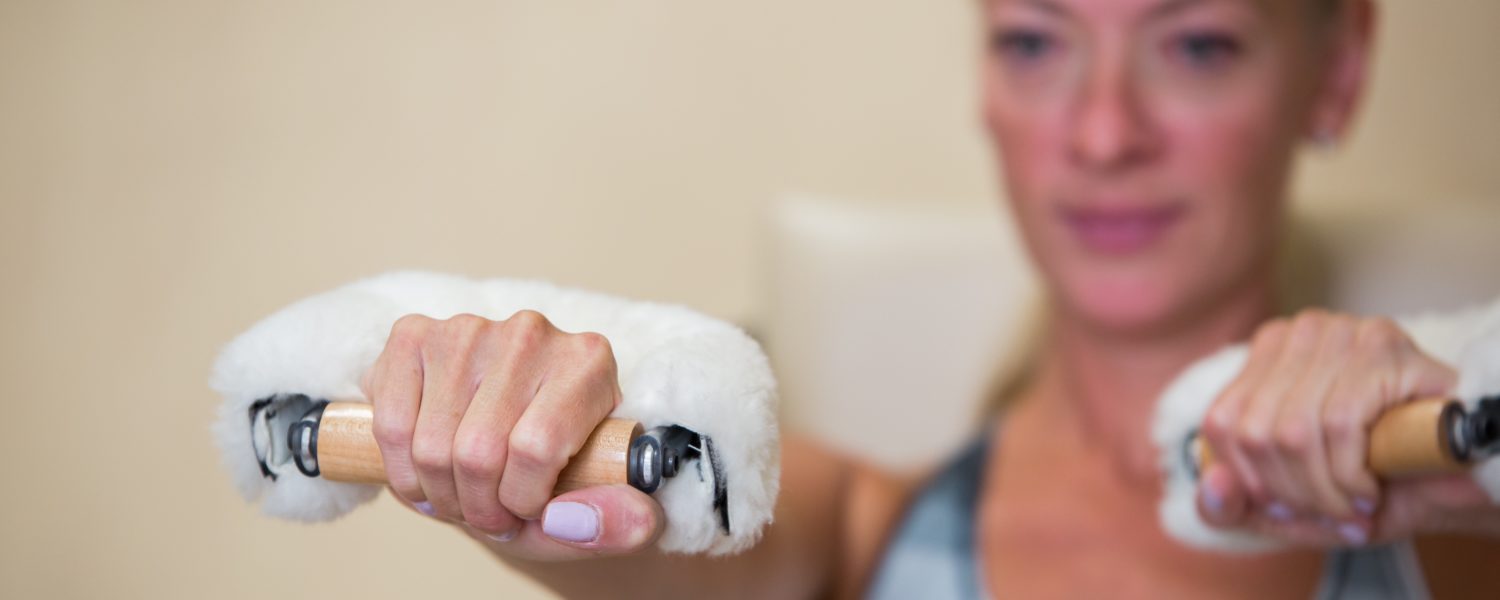Pilates Power of the Eccentric Contraction
There are three types of muscles contractions: concentric, isometric, and eccentric. A concentric is when the muscle contracts and gets shorter, such as what happens when you lift a weight for a bicep curl. Isometric contraction is when the muscle is held in a static contraction, like holding a wall sit. The eccentric contraction is the lowering part of the movement, when you lower the weight from the bicep curl. During an eccentric contraction, the muscle gets longer while it contracts, causing the muscle to work harder. In fact, it’s this eccentric contraction that is responsible for delayed onset muscle soreness (DOMS), which sets in 24–48 hours after the workout. The good news is that, with repeated exposure to eccentric exercises, DOMS decreases over time.
Pilates uses all three types of muscle contractions, but there is more emphasis on the eccentric contraction than typically found in other exercise systems. Pilates uses the resistance of the springs on pieces of equipment, such as the reformer, chair, and tower. Smaller pieces of equipment, such as the magic circle, also offer the resistance needed to create an eccentric contraction. During matwork, it is the resistance to gravity that creates the eccentric contraction. “Lower to the mat with resistance” is a common call of instructors when cueing the roll-up, roll over, neck pull, and other mat exercises.
That’s the “magic” of Pilates. When beginning on the reformer with foot work, the push out is often seen as the hard part of the exercise, but the real benefit is on the way in—the eccentric contraction. (How many times have you heard your instructor say resist the springs?) Another example is chest expansion with the rollback bar: the initial press of the bar is challenging, but it’s the release of the bar that lengthens the muscles, creating the eccentric contraction. Pilates builds a long, lean look without building bulk. The secret is the focus on the eccentric contraction.
Focusing on eccentric exercise has additional benefits:
1. Increased Flexibility
A research review published in the British Journal of Sports Medicine concluded that eccentric training is an effective way to increase flexibility in the lower portion of the body. Another study published in the North American Journal of Sports Physical Therapy found that by moving through the entire range of motion during an eccentric contraction, hamstring flexibility doubles compared to static stretching. Pilates, which incorporates few held stretches, incorporates stretching into the movement: examples include performing the tree on the reformer or one-leg circles on the mat.1,2
2. Get Stronger, Faster
Muscles are at their strongest when they move eccentrically. Even a newbie to fitness can start building strength by utilizing the eccentric contraction.
Beginners to Pilates often cannot perform a roll-up on the mat, but most are able to start with a roll down—resisting as they lower down to the mat. Both utilize the eccentric contraction. Eccentric contractions will improve muscle strength more than concentric contractions.3
3. Joint Health
Eccentric contractions may be particularly beneficial for older individuals, who tend to be a greater risk for tendon injury. A study in the Journal of Shoulder and Elbow Surgery found that six weeks of eccentric exercise improved strength and reduced pain in those with chronic tennis elbow better than standard treatment (stretching, massage, ultrasound, and heat/ice).4 Other studies indicate eccentric contractions can help improve Achilles tendonitis and tendonopathy of the knee (jumper’s knee).4
Pilates helps facilitate the strengthening of the joints by performing weight baring exercises while the muscles are lengthened.
4. Decreased Risk of Injury
Functional movement of daily life—think walking downhill or down a flight of stairs—requires eccentric control. It is therefore reasonable to conclude that building strength will better prepare our bodies for healthier day-to-day living. And, since we are stronger when we work out eccentrically, and since these workouts require less effort while producing less cardiovascular strain, an eccentric workout is the optional choice for beginners.
The idea of resistance with controlled movement is foundational to the Pilates method. The six central tenants of Pilates are concentration, control, centering, breath, flow, and precision. Joseph Pilates was said to keep a laminated watercolor on the wall of his studio with a quote from Fredrich Schiller, “Es ist der Geist Der sich den Korperbaut”: It is the mind that builds the body.
And the mind is exactly what is needed to execute eccentric contractions.
References:

